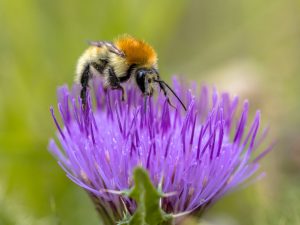A perfect garden is not a space in which the layers of carefully arranged flowers are perfectly aligned, next to an impeccable lawn, where each blade of grass has the right length. A perfect garden can also be the place where, once you arrive, you have the feeling that you are in a pristine wild place, where the plants, flowers and grass seem to grow naturally, randomly and at the same time in a perfect harmony, which only nature could create.
Such a garden is especially suitable for rustic and traditional courtyards, where modern decorative elements and exotic plants do not find their place. Although the arrangement of a garden that mimics a natural landscape requires some skills, it can be achieved with patience and dedication.
Many gardeners naively think that they can spread some wildflower seeds in the garden and end up with a beautiful meadow. The truth is that building a wild flower garden usually requires the same level of work as creating a regular garden.
But why should you “convince” wildflowers to come out of the ground, if they naturally grow without human intervention? Wild flowers are indeed species that proved to be resistant and multiply with little attention from the gardener. But although they will grow on their own, wild plants are not necessarily parts of the spontaneous flora.
Having a wildflower garden is a cheaper alternative to a regular garden because many wild flowers prefer poor soil, making them ideal for areas that are difficult to maintain. But even a wild landscape requires planning and effort. Here is what to consider first:
- Make sure your garden receives enough sunlight.
- Weed control is a must. Weeds are the biggest threat to a wild garden, so you will need to take the necessary measures.
- Take into account the climate of the region where you live and choose local flower species.
Climate in the Midwest
The Midwest gets very cold air masses from the north, as well as warm and humid air masses from the Gulf of Mexico. The result is a wide range of temperature and precipitation extremes. Over the last decades, the global warming determined the average air temperature in the Midwest to increase by more than 1.5°F and is projected to continue increasing across the region. Precipitation is the most significant in the eastern part and less towards the west.
The Midwest is covered by the Great Lakes and rivers, as well as forests and grasslands.

In this climatic context, there are some particular species of wildflowers that will grow easily in your garden. Not only they are beautiful, but these native wildflowers along with a good pollinator wildflower mix can help restore habitat and strengthen ecosystems in the region.
The following flowers can handle extreme swings in Midwest weather better than non-natives:
- Red Columbine (Aquilegia canadensis)
- Butterfly Weed (Asclepias tuberosa)
- New England Aster (Aster novae angliae)
- Prairie Aster (Aster tanacetifolius)
- Plains Coreopsis (Coreopsis tinctoria)
- Purple Coneflower (Echinacea purpurea)
- Indian Blanket (Gaillardia pulchella)
- Wild Lupine (Lupinus perennis)
- Lemon Mint (Monarda citriodora)
- Grey-Headed Coneflower (Ratibida pinnata)